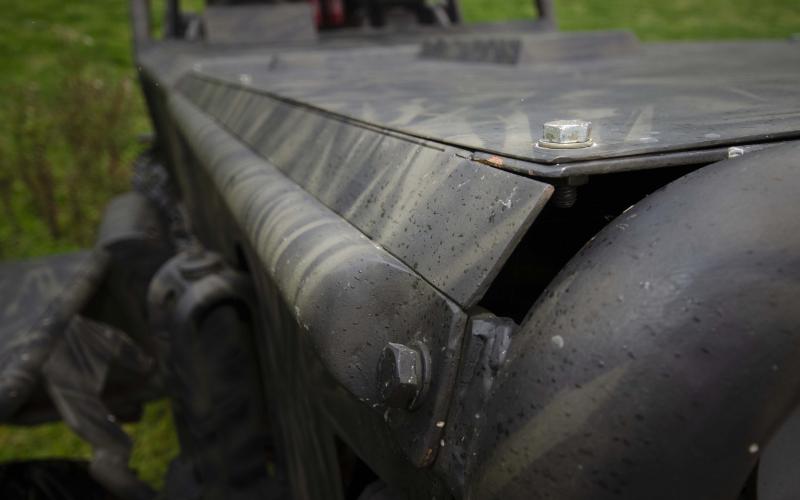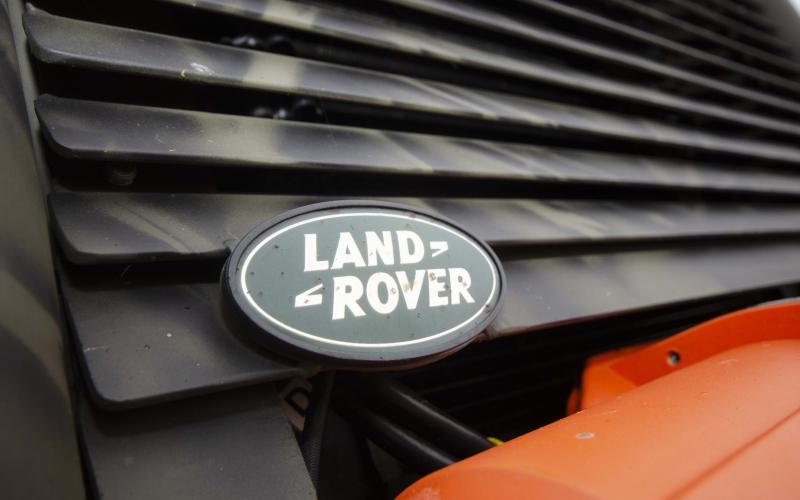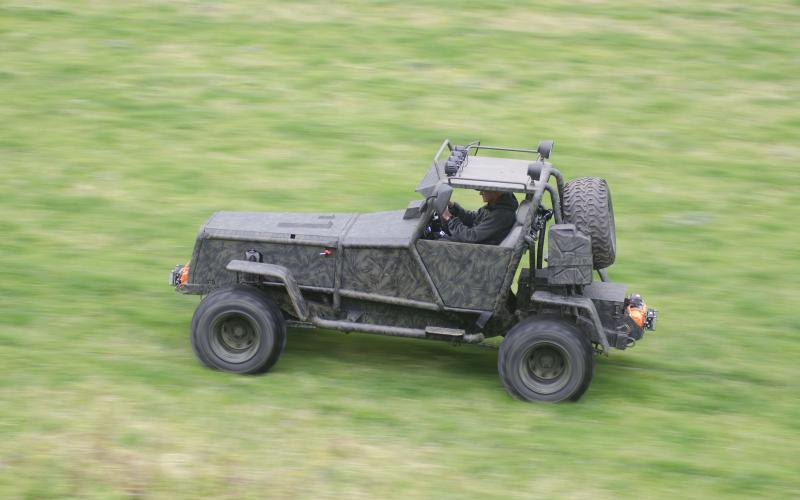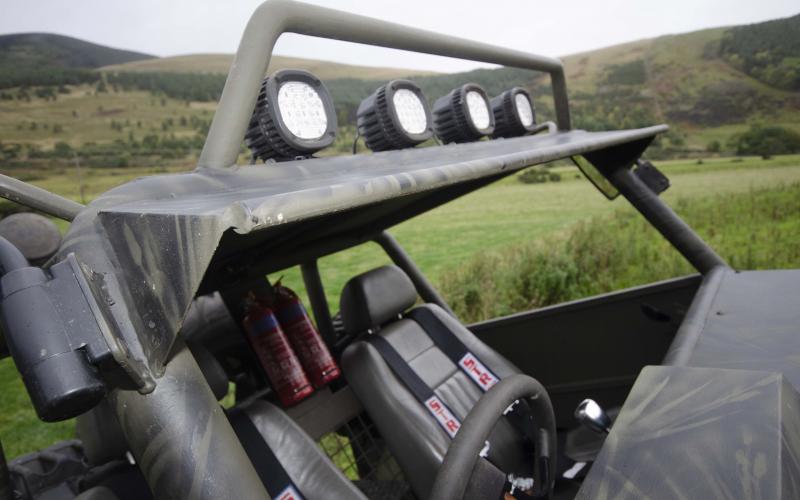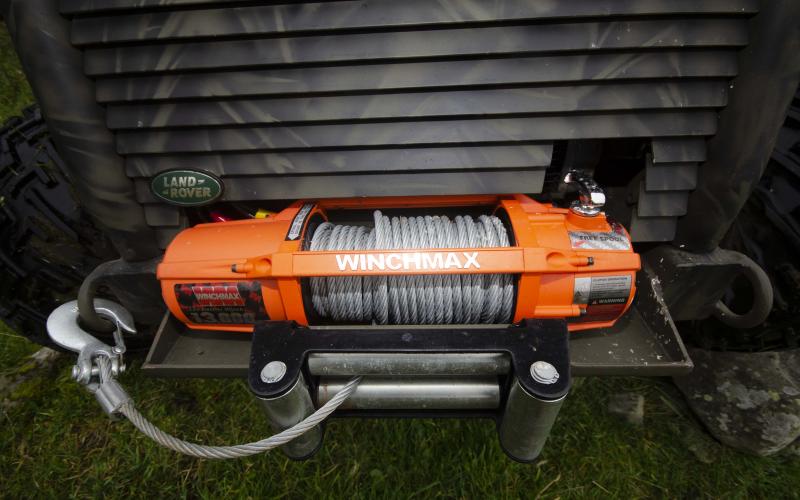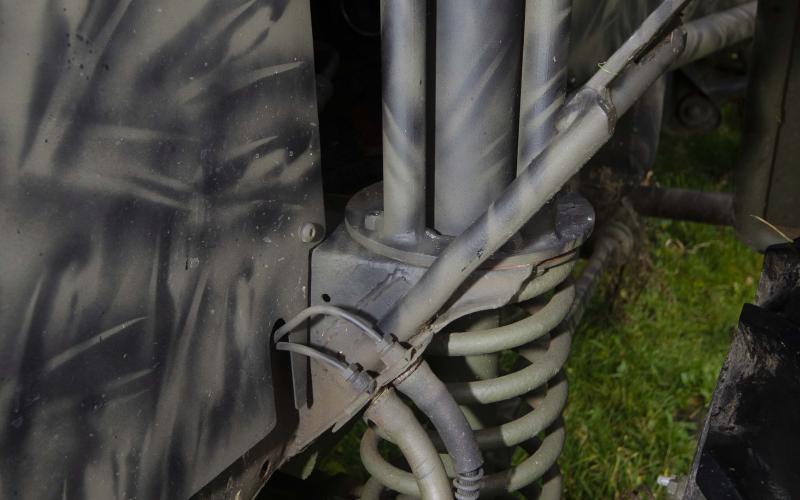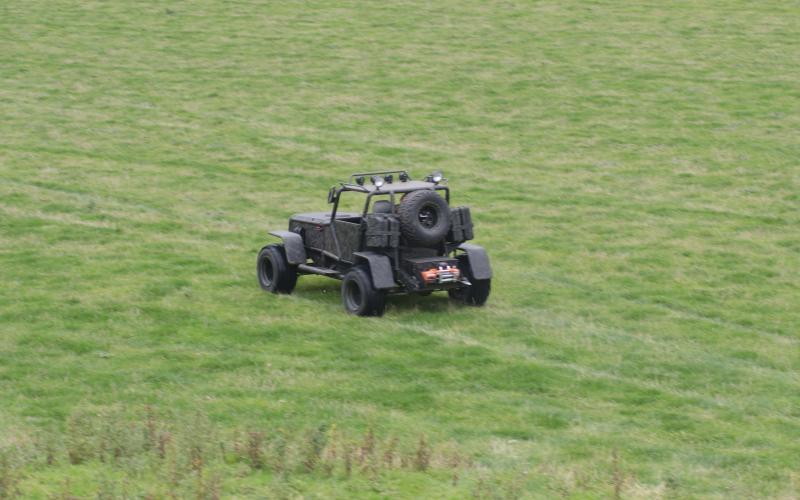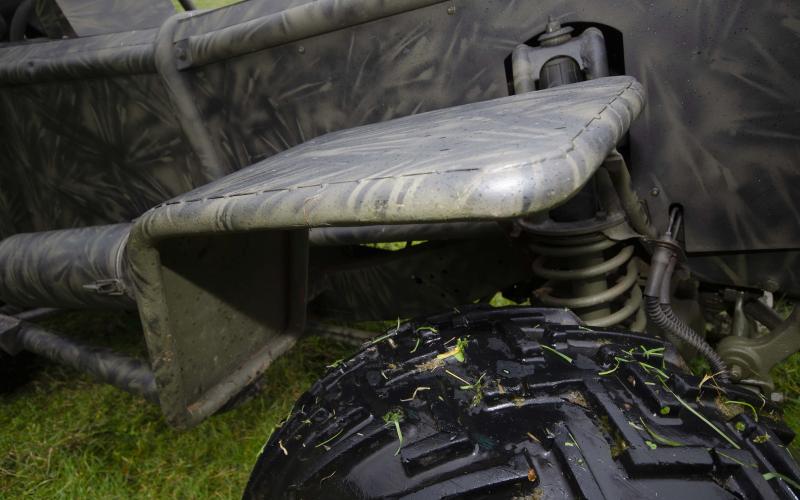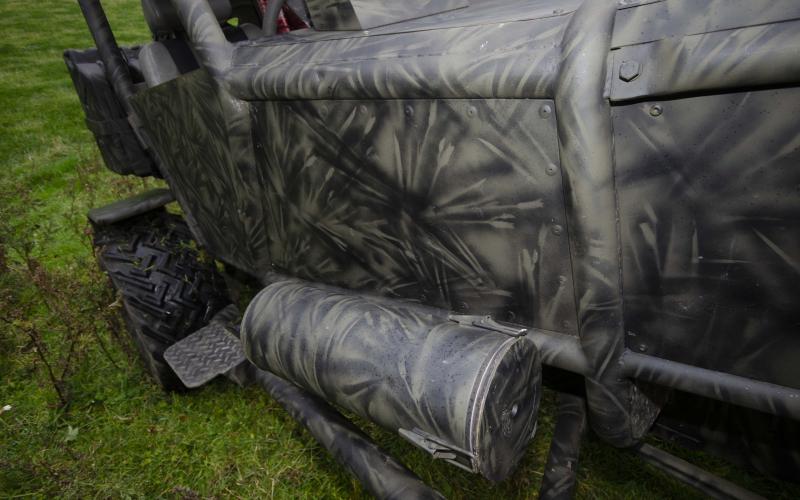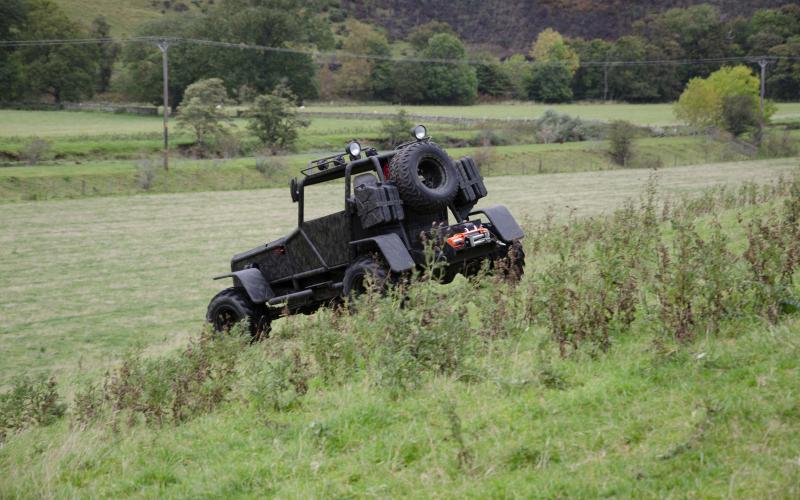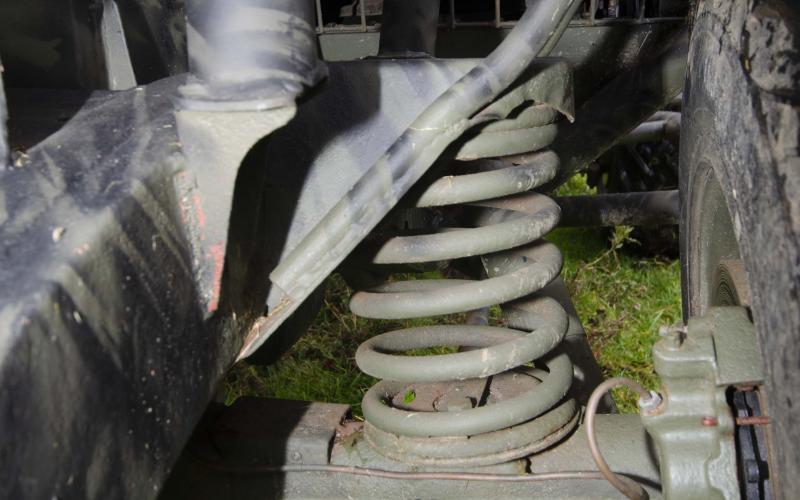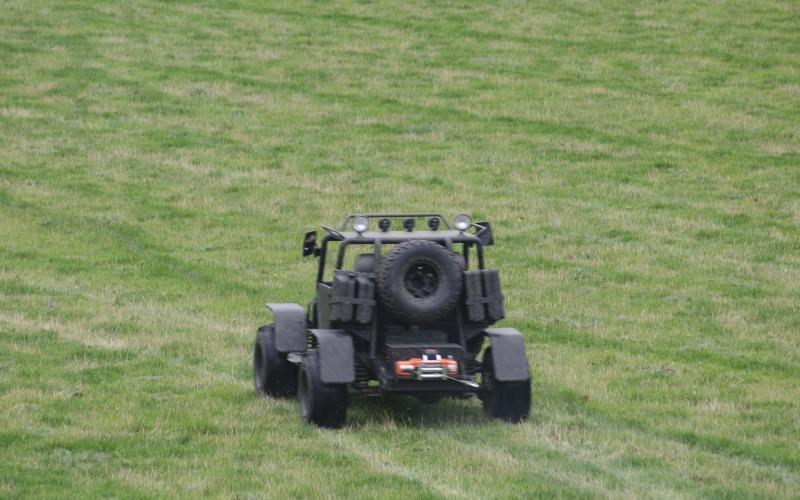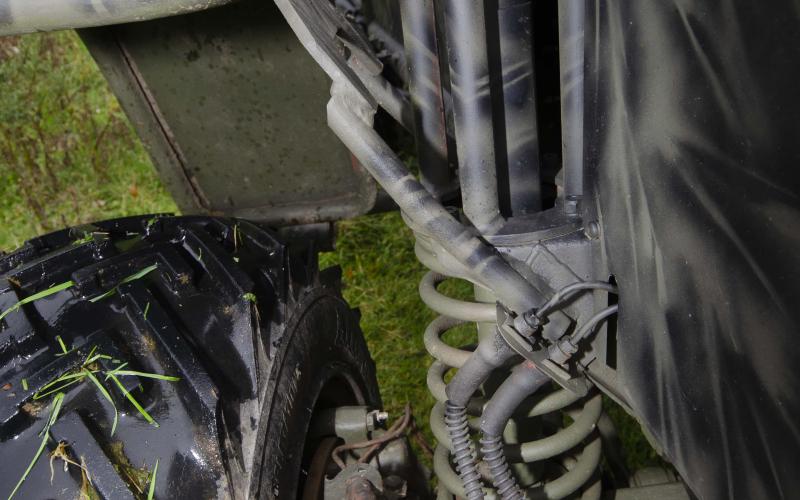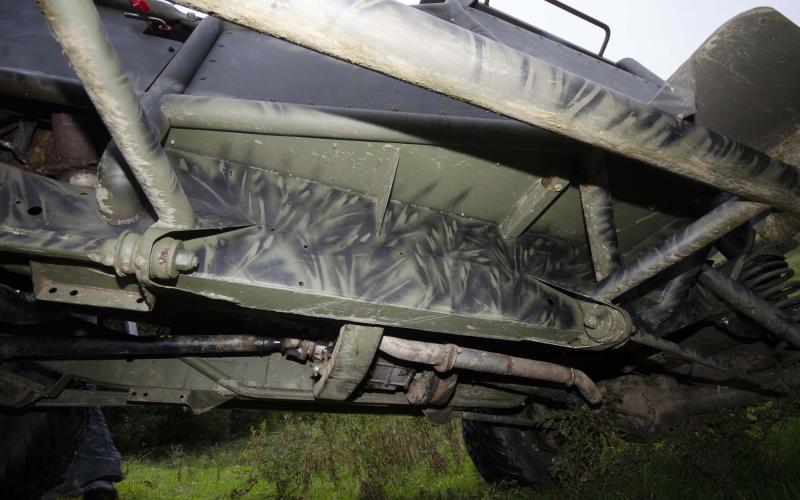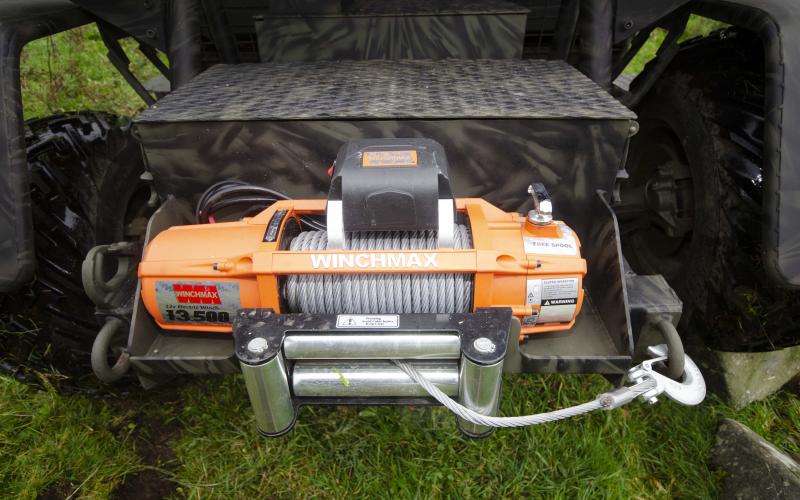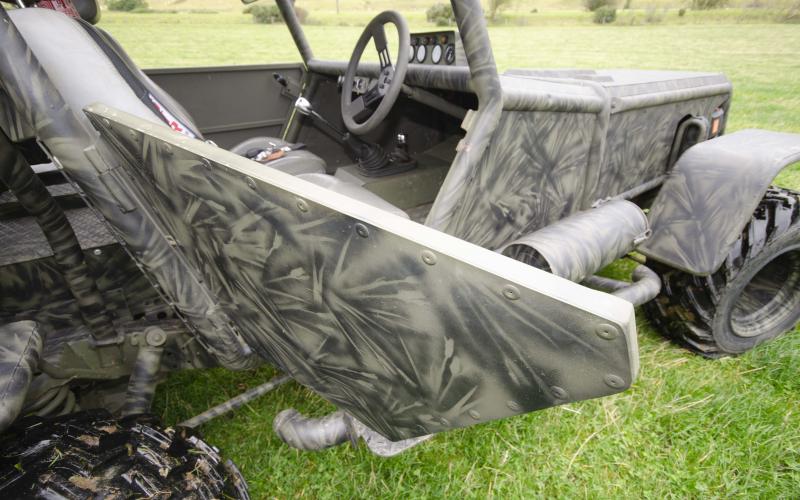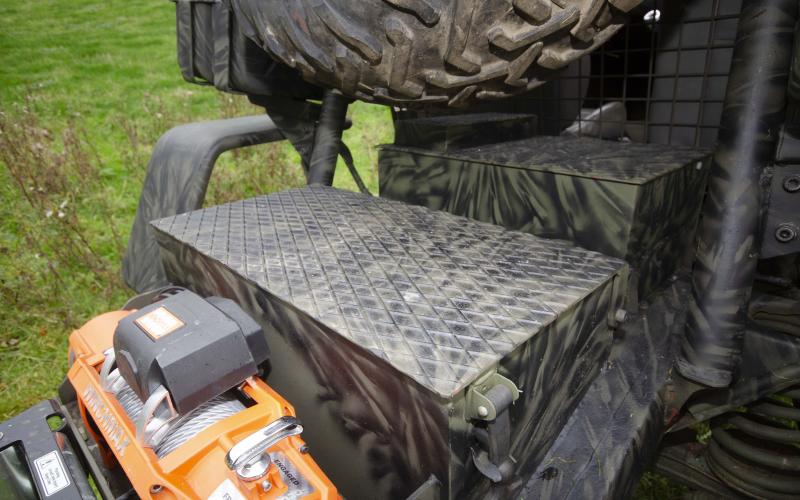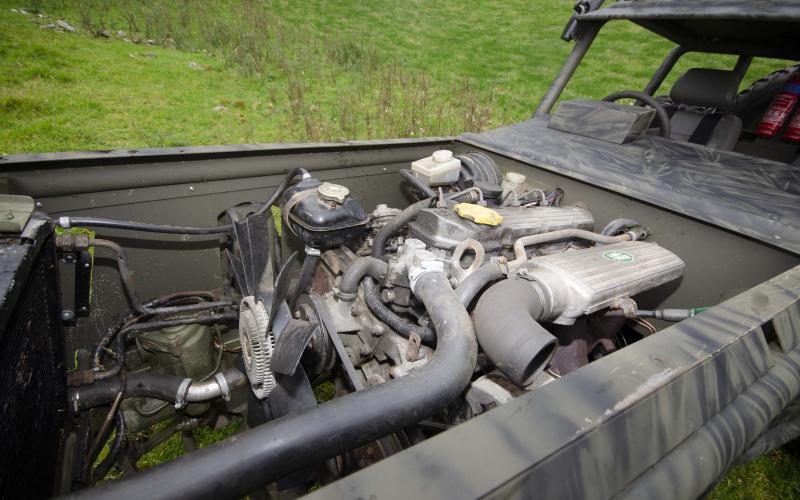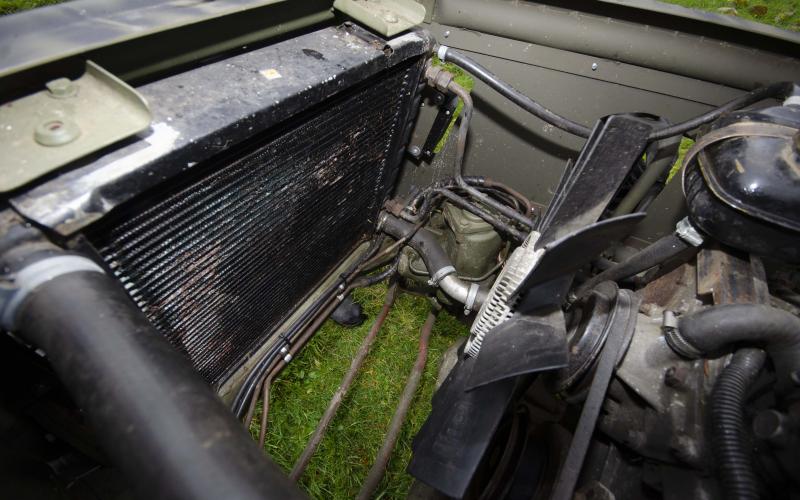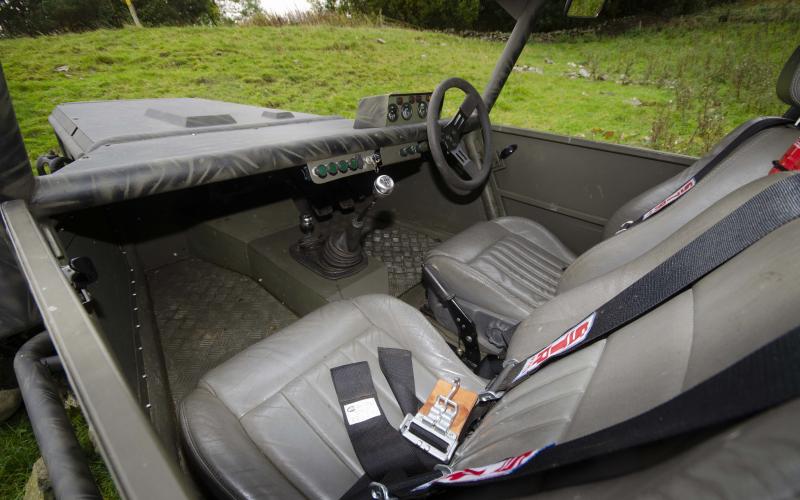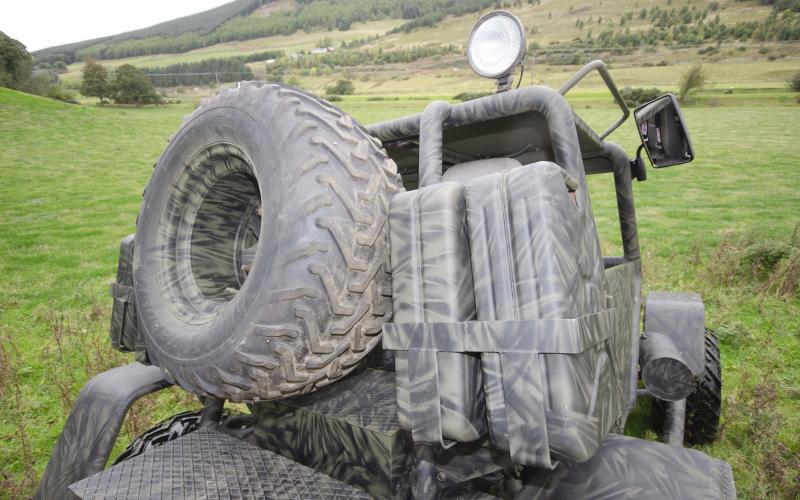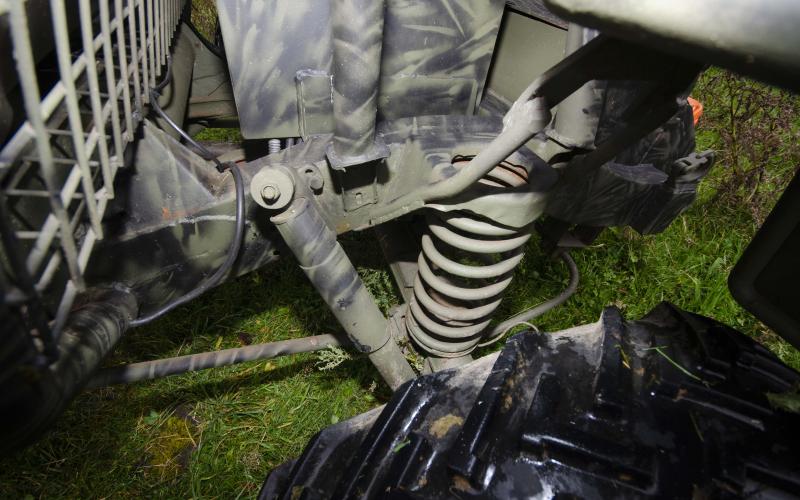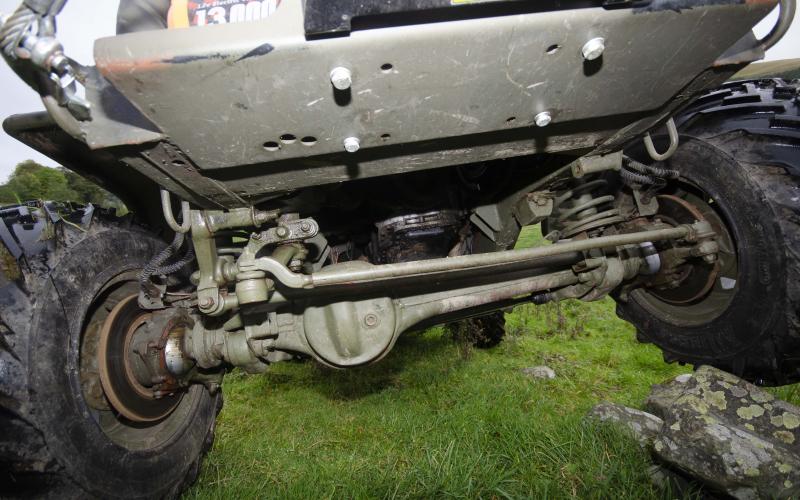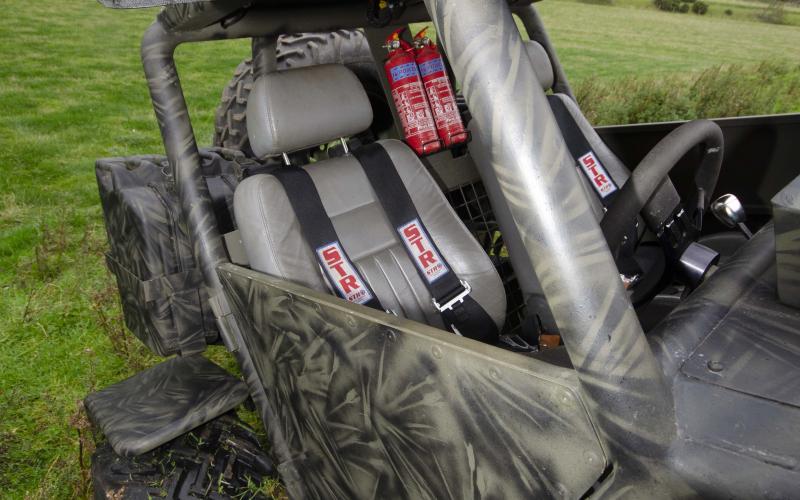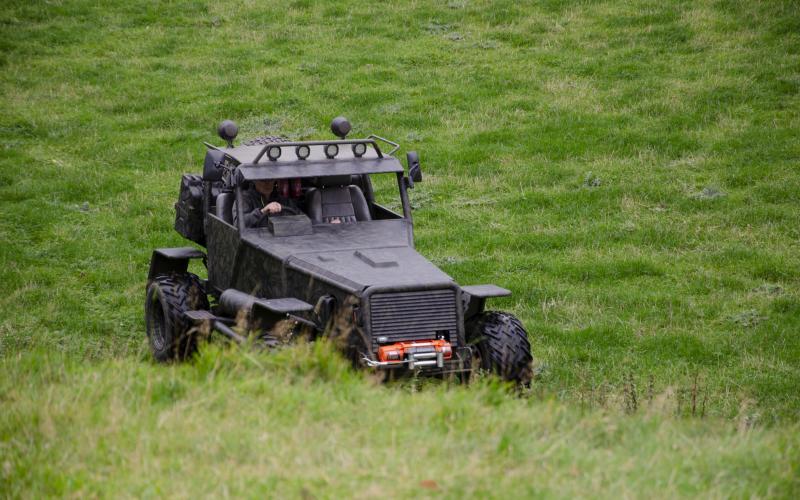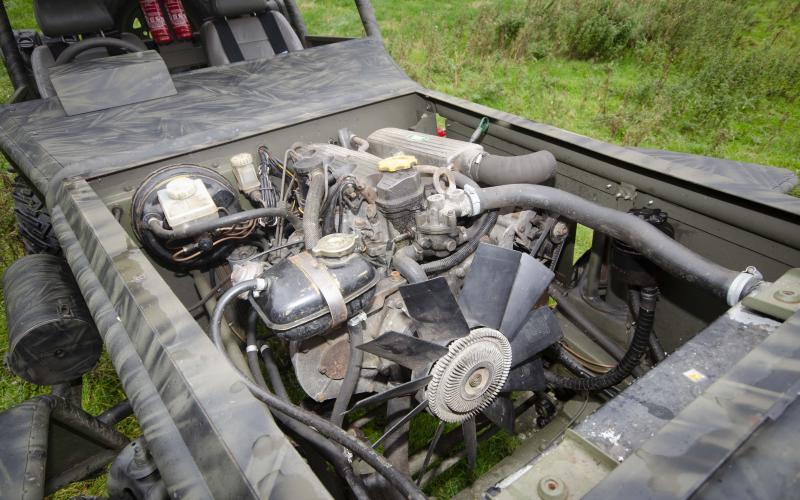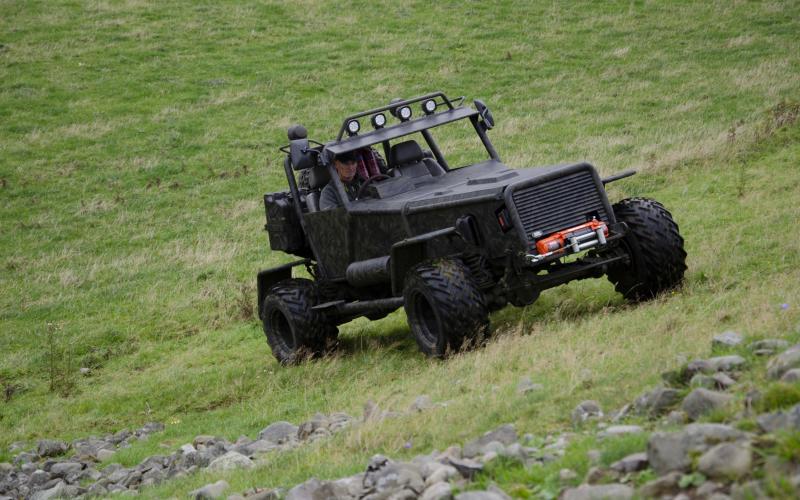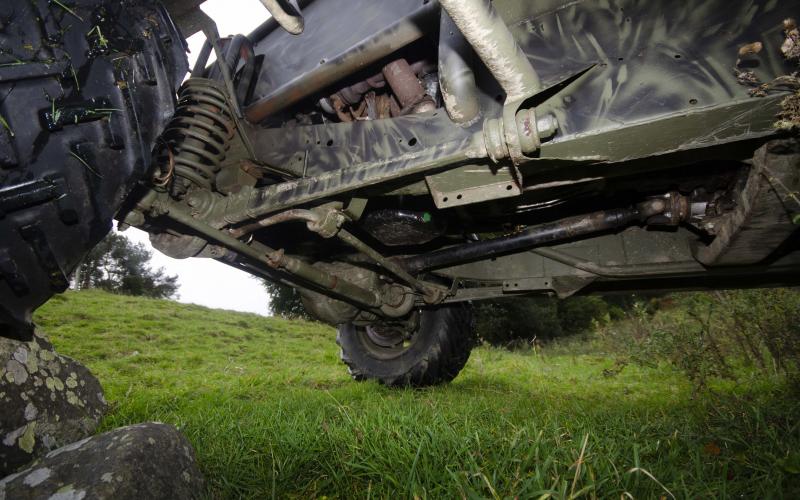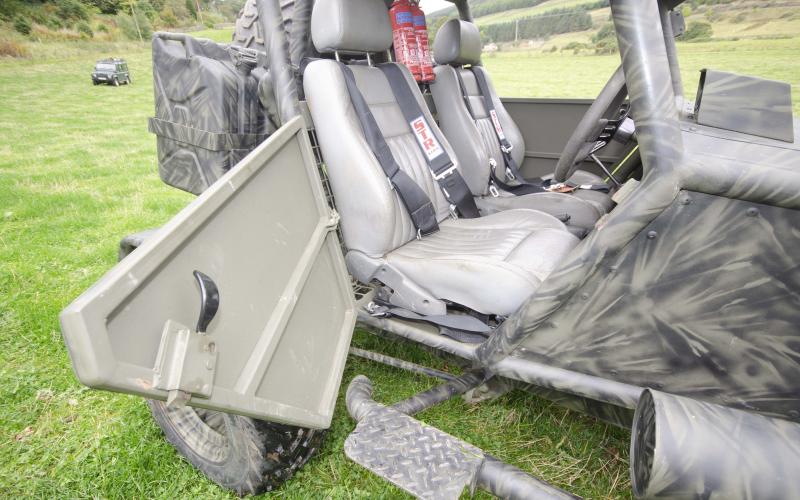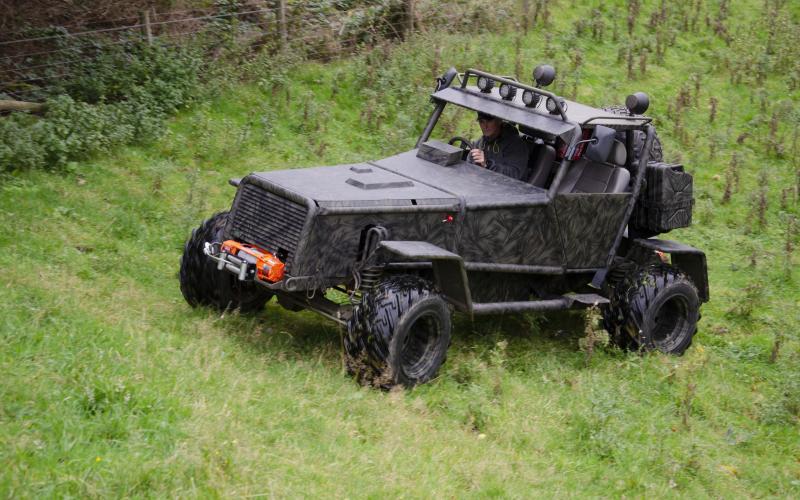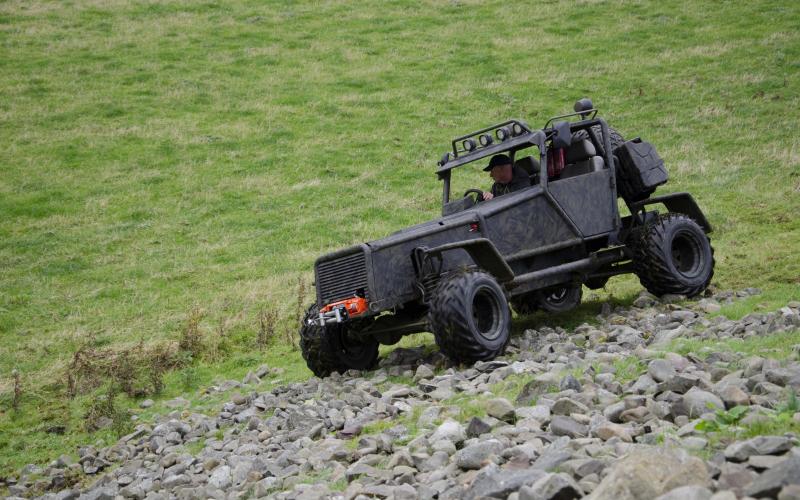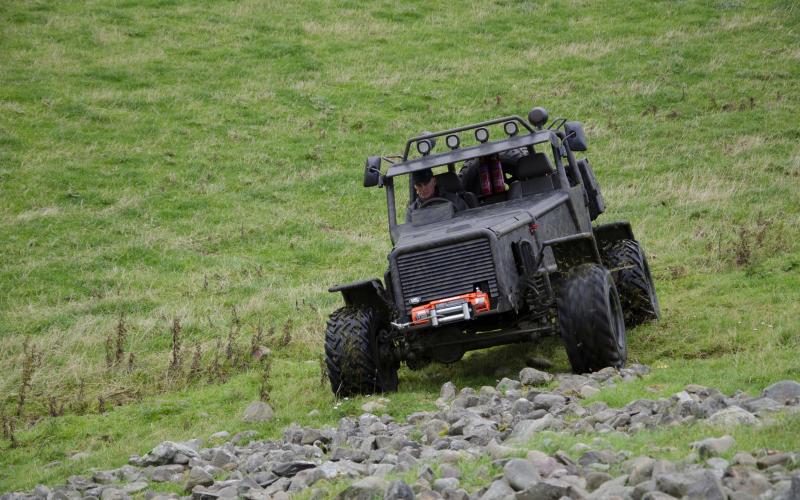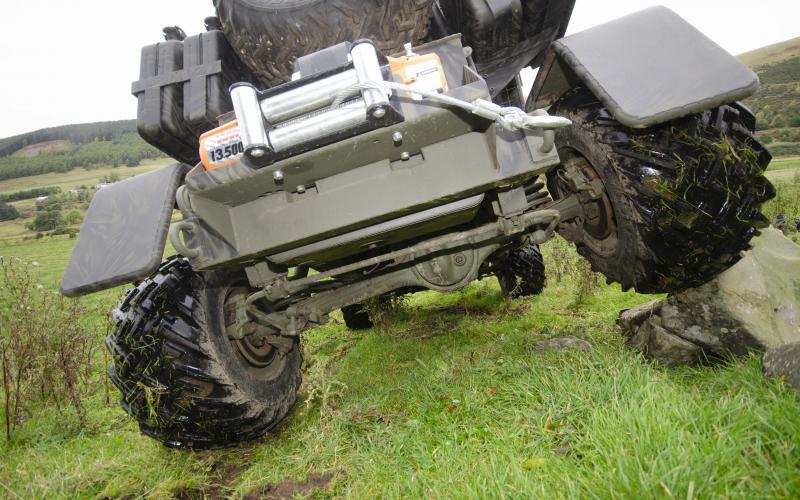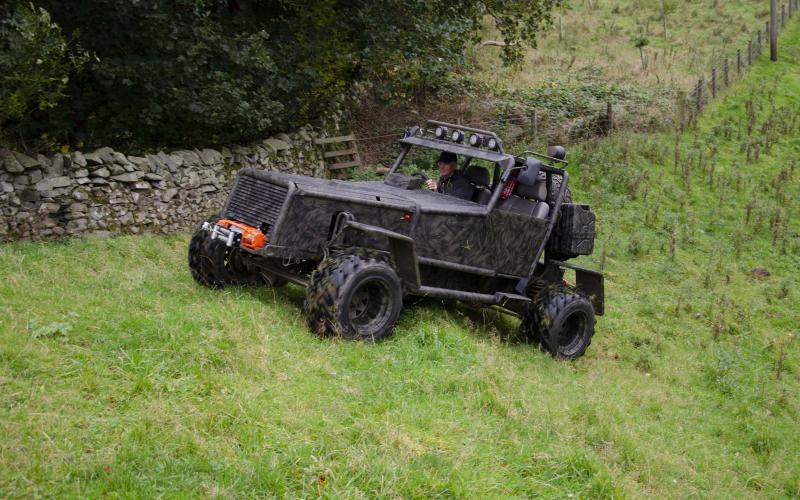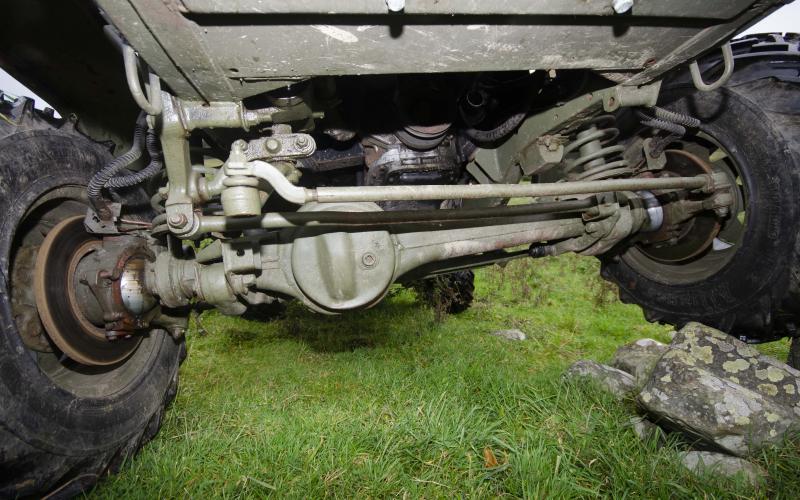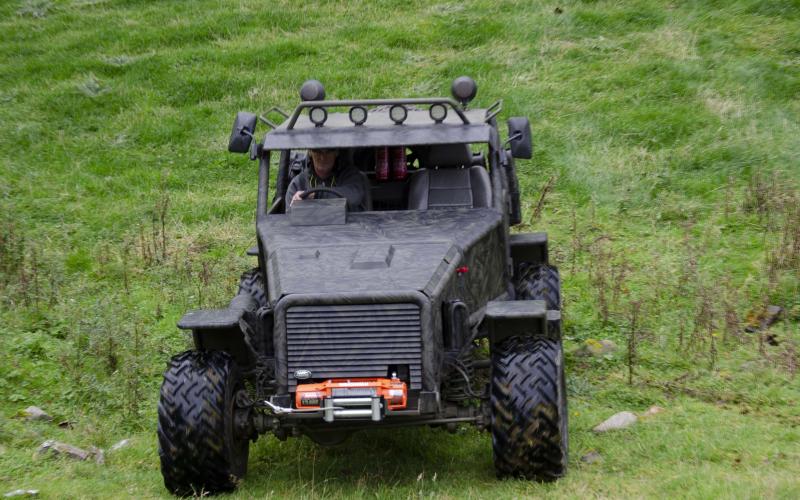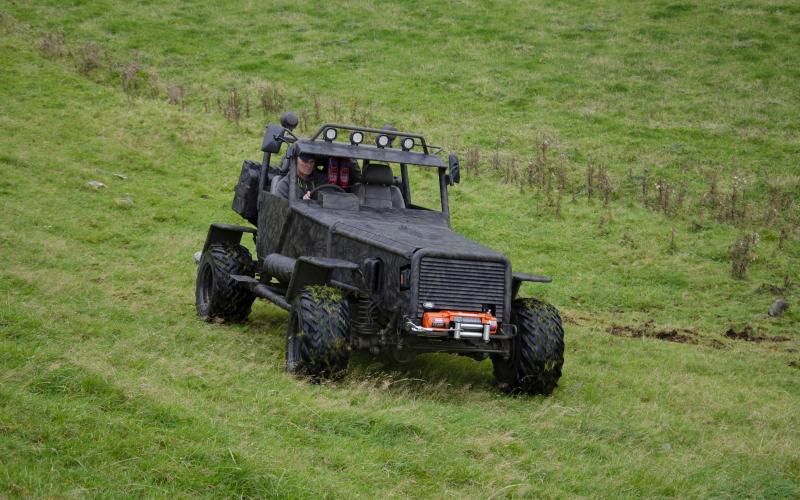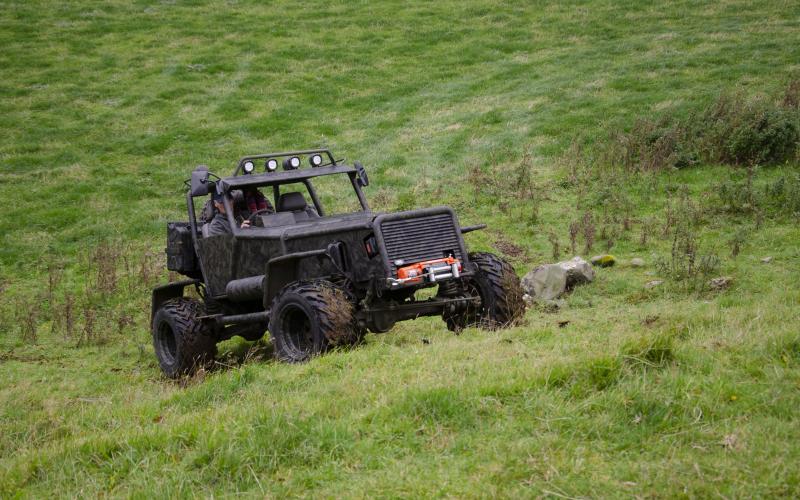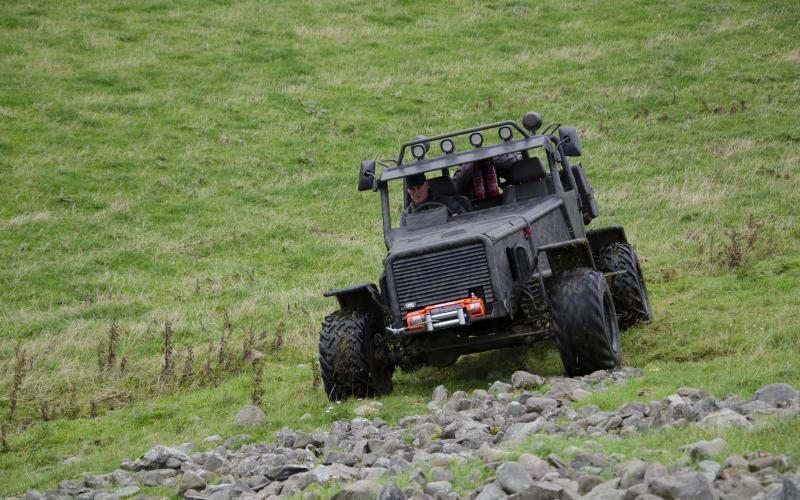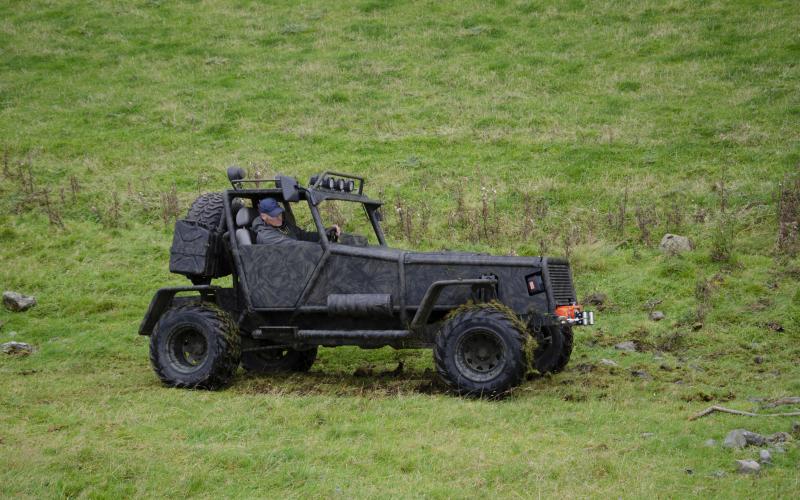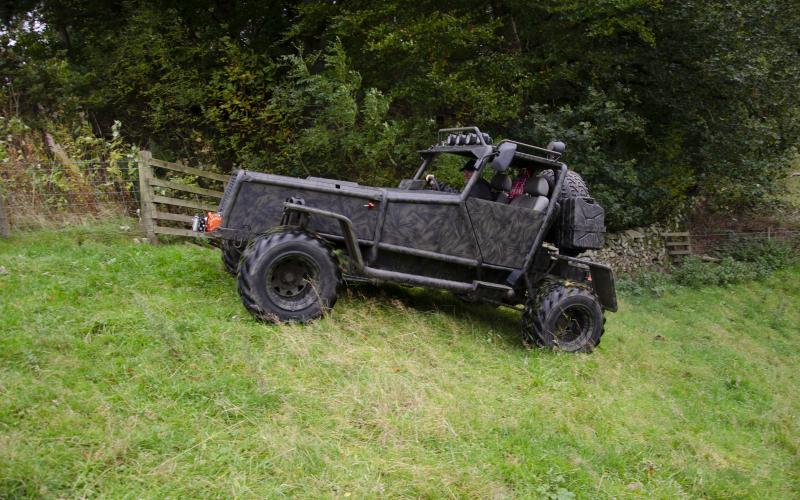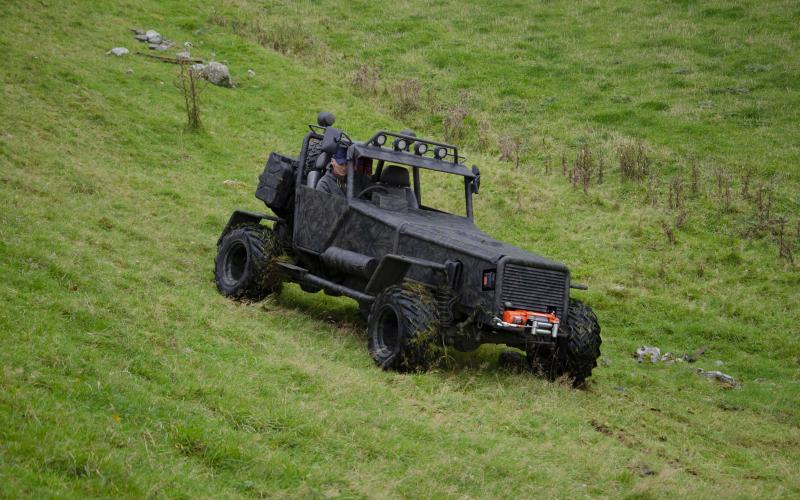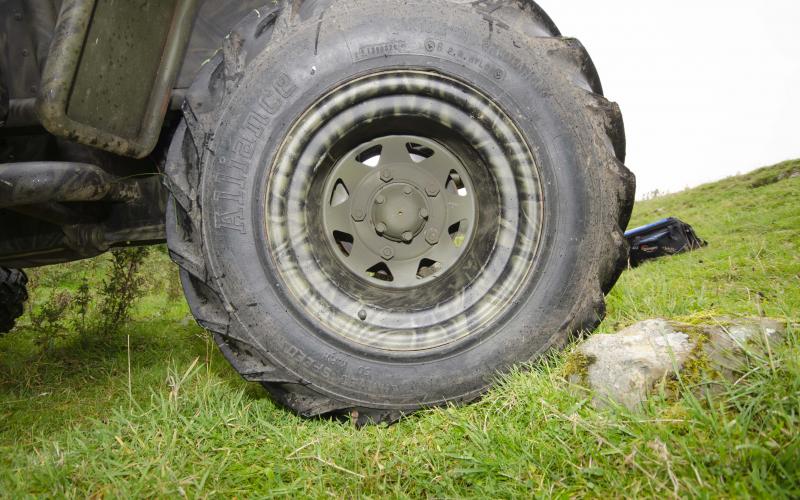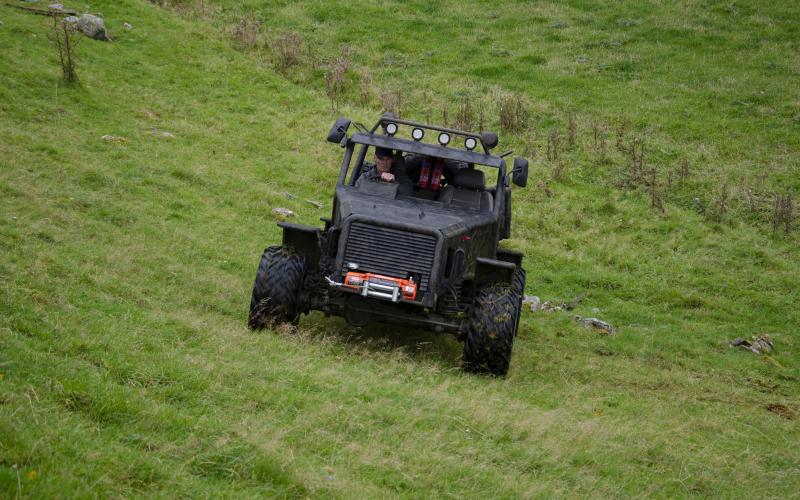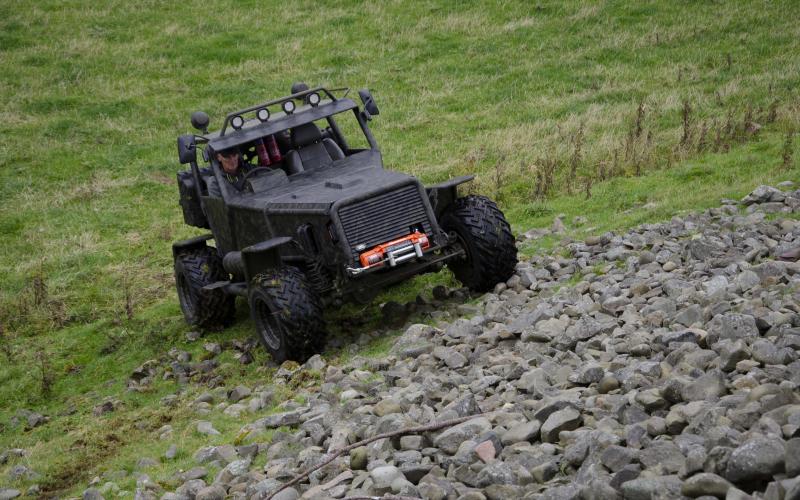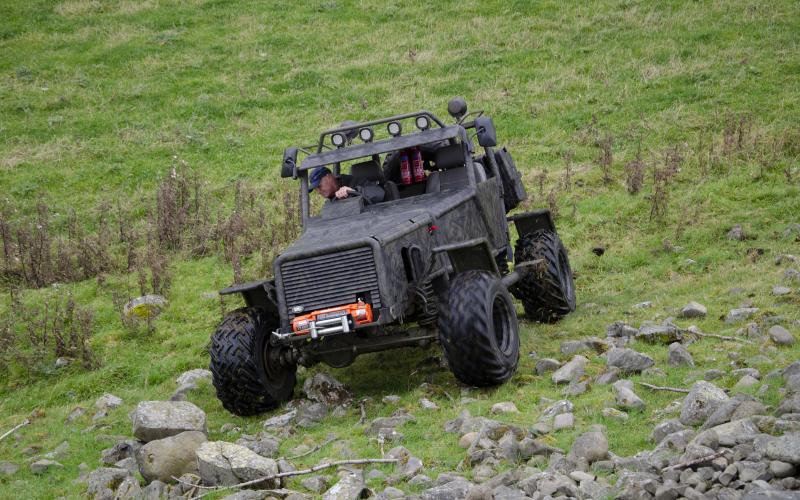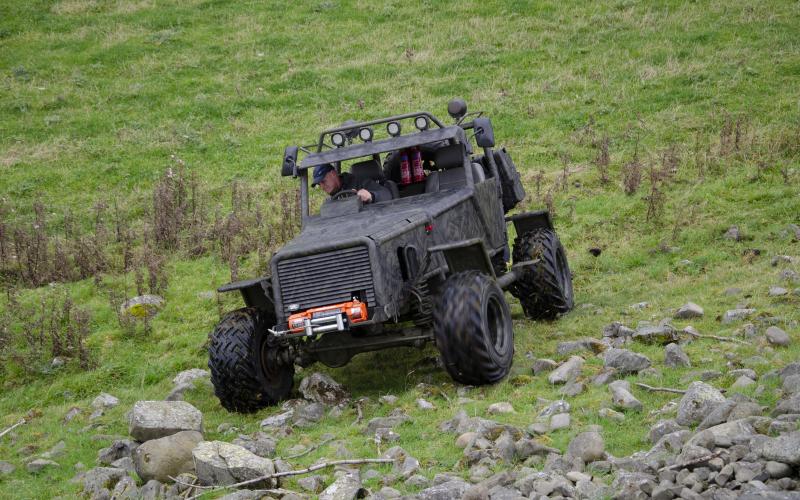Mud Max
FIRST FEATURED IN 4X4 MAGAZINE, APRIL 2018
Some vehicle builds seem to make a point of using parts from sources most of us have never heard of. But here’s proof that you can start with the sort of bits most workshops have piled up in the corner – and use them to create a vehicle that looks as if it belongs on the set of a Hollywood blockbuster.
If you work in forestry, you will have to cover difficult terrain.That’s more or less a given. Having worked in the industry for many years,AlexWard has pretty much lived off-road. He has also spent many an hour rectifying mechanical issues experienced by the various working vehicles he served beside.This means that when he decided he wanted to start a project, he was perfectly prepared to do so.
‘I was employed by a large estate in the Lothians,’ said Alex.‘I was based in a forestry workshop, but often worked out in the surrounding area in the Scottish Borders attending machinery breakdowns.’
But Alex’s work wasn’t limited to maintenance. One day, his employers asked him to take on something a little bigger.
‘I used to use the estate’s E-reg Land Rover station wagon.And then they requested that I restored their Series III. It was a project that I was more than happy to undertake!’
The restoration saw Alex use a new galvanised chassis as the basis for a full ground-up renovation. It only served to further his desire to start a project of his own.
‘Doing a project had been something of a pipe dream for many years, and it didn’t start until I happened to have the time and a collection of parts. I just began to build, with an end goal of creating a serious off-road vehicle that was fun to use around the hills and forestry tracks I had access to.’
Handy, that.When you’ve got thousands of acres of sensational wild terrain to use as your playground, you can afford to cut loose on your build plans.You don’t need to worry about it being the right size to fit down a green lane,
for example, and with all that private ground at your beck and call you can afford not to concern yourself with what the MOT man is going to say. Having said that,Alex’s creation would cut a dash on any high street.You could roll up in any loadsamoney SUV and with this parked next to you, you’d be anonymous. It might have been conceived for a pure off-road purpose, but if Hollywood ever wants to make a movie called Mud Max, the star of the show is already waiting.
But believe if or not, what you’re looking at is... a Land Rover. That collection of parts Alex mentioned was harvested from a variety
of Solihull motors and pulled together into something that took shape over a long period of time. And deep down, as deep as it gets, it’s not even a Defender.
‘When I started,’ reminisces Alex,‘I had a Discovery chassis and axles.‘Then I bought a 200Tdi engine, gearbox and transfer box and put together a rolling chassis. I began to build on that, working on it when I could over the next three years.’
The chassis was shortened both front and rear and then strengthened with heavy-duty box sections. Upgraded axles came in Range Rover Classic guise, and reinforced mounts for the engine and winches were welded on to the frame.The engine now sits about eight inches further back than standard, which is good for pitch balance and helpfully means the gear lever sits in the right place in the cabin.
Further custom fabrication saw brackets for a spare wheel carrier and a new battery box added to the plot, along with a fuel tank box and its fittings. No changes were made to the 200Tdi engine, other than a K&N air filter to help it breathe a little easier. Wherever you look on the vehicle, you see one of two things – Land Rover parts, whether standard or adapted, and entirely bespoke work made by Alex’s own hand. ‘The brake discs are standard, but I’ve had to modify the hoses and the handbrake,’ he continues.‘I uprated the coil springs and added gas shocks, but did nothing else to the suspension.
‘The original power steering is fitted in the original configuration on the chassis, but from the steering box back it had to be made so it would fit the new bulkhead and dashboard frame. This also included two universal joints and a quick release steering wheel.’
Now, moving on to the bodywork – it certainly isn’t Land Rover. You don’t need to be on the ALRC Scrutineering Committee to work that one out. And it might not look shapely the way a Discovery or Evoque is. Hell, it might not look shapely the way a Defender is. But don’t be fooled – creating it wasn’t easy, either.
‘Designing the tubular frame was the most difficult part of the build,’ reveals Alex. ’Many of the angles were just too tight to use machinery on. So, in the end I had to weld all of the angles into the tubing.’
The resulting monocoque cab construction is welded to the chassis and is made from the same 2mm thick steel as the floor and the fabrication beneath it.The steel has been strengthened with sections of heavy-duty box, and extra steel reinforces the anchor mounts for the harnesses. For added impact protection, tubular steel sections running along the sides have been welded to the chassis for rigidity.
‘When it was ready, I took the vehicle out for a quick test drive,’ recalls Alex. ‘I was heading over a wet grassy field about a mile out from the workshop when I saw some boggy ground up ahead. I stopped at the edge and remember thinking “I can get through that with my newly built all singing and dancing, go anywhere buggy.” I shot forward about three or four yards and down she went.’
Sunken to the bottom of the cab, Alex had to abandon the buggy and head back to the workshop for reinforcements. Having pulled his project from the mire using a forklift, two things were clear. One, gravity still applies a mile from the workshop. And two, some means of self- recovery would be a good plan.
Not being one to mess about, Alex gave the vehicle 26,500lbs of winching power. Which really is quite some means of self-recovery.
‘I fitted the vehicle with two Winchmax 13,500lb 12-volt remote-controlled winches,’ he says,‘bolted on to heavy frames attached to the crossmembers. They’ve got the standard stainless fairleads still fitted, and the controls are stored in a waterproof stainless steel container mounted to the side of the vehicle.’
Power for the winches comes from a dedicated 12-volt battery, just like the other one Alex installed for the ignition and light circuits. And this meant a lot of wiring, which would be a nightmare for most people. How many off- roaders do you know who can weld and spanner in their sleep but turn into a quivering wreck of lime jelly when confronted with electric string?
Alex is not one of them.‘The strange thing is, I enjoy wiring – it’s a real challenge!’ Bet a lot of his friends have his number on speed dial...
After he had custom-made most of the loom, there were seven switches plus the ignition starter to be wired into the cab,as well as the dash-mounted gauges (ammeter, fuel gauge, fuel and oil temperature) and the oil and ignition warning lights.Then came six roof-mounted spotlights, and all the wiring was fed through relays and fuse boxes. Finally, when all the sparky work was done and the vehicle was ready to go,Alex could pull the Series Land Rover handle, open the low- slung custom fabricated door and climb into his creation. Sat in the leather seats – previously of a Rover 400 – and strapped in by five-point harnesses, it was time for action.
‘I can only speak for myself, but it is a real joy to drive,’ he says.‘It’s great out on the trails, but the thing I enjoy most about it is the sense of achievement it gives me and the pride I feel knowing that I’m driving something that I built!’ That he built, or that he’s still building? No such thing as a finished project, and all that, though we’re talking details now.‘I’d still like to fit Detroit Truetracks to both axles, plus a windscreen, side windows and more storage containers to improve the vehicle in general.’ A windscreen. Told you we were talking details.
A certified head-turner,this vehicle is an achievement Alex is rightly delighted with. It may have taken a long time, and there were plenty of ups and down along the way, but he brought it to life – from,let’s not forget,no more than a pile of parts.‘I have to thank Rupert at Leng LR in Walkerburn,’ he says. ‘Also my daughter Tanya, who first brought my buggy to 4x4’s attention.
Would he do it again? Sounds like it, yes. ‘Building the vehicle has been a great experience. I’d offer encouragement to anybody thinking about a project of their own!’ There you go then, time to get the spanners out and see if you can create something as outlandish as this from the sort of everyday parts we all know inside out.




